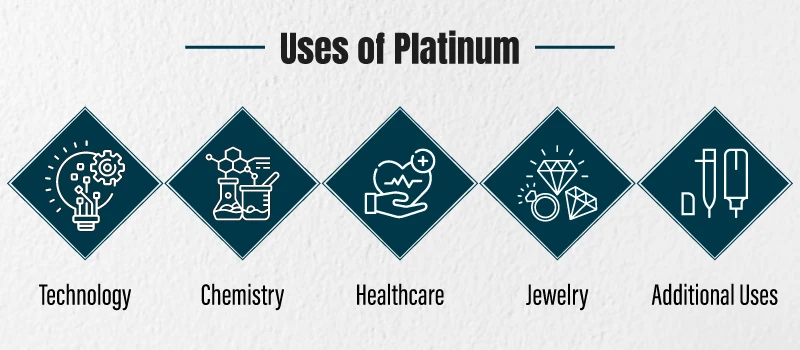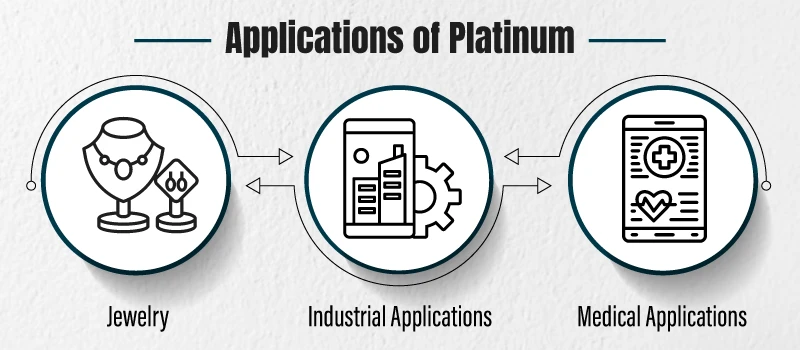

Platinum has established a reputation as a sought-after and precious metal thanks to its alluring luster and wide range of applications. Its unique attributes have elevated it to the status of a symbol of grace and elegance, frequently linked to high-end jewelry, sophisticated manufacturing techniques, and cutting-edge technologies. We get asked all the time if platinum tarnishes like other metals, and to answer that, it does not. Platinum has a well-deserved reputation as a popular and versatile metal because of its distinctive qualities and importance in many different industries.
Many precious metals undergo a process called tarnishing that results in them losing their initial shine and taking on a dull, tarnished appearance. Generally, tiny layers of tarnish grow on the surface of metals as a result of their reaction with atmospheric gases or chemicals such as sulfur compounds. Common metals that tarnish with time include brass, copper, and silver.

The platinum group metal (PGM) has a variety of uses, such as:

Despite only producing 192 tons of metal annually, platinum is a common metal that is used in many everyday products.
Platinum is perfect as a catalyst in chemical reactions because of its resistance to corrosion and stability at high temperatures. Without changing chemically in the process, catalysts quicken chemical reactions.
Approximately 37% of the metal's overall demand in this industry is satisfied by platinum's primary use in automotive catalytic converters. By starting reactions that transform 90% of hydrocarbons (carbon monoxide and nitrogen oxides) into other, less hazardous molecules, catalytic converters lower the amount of hazardous substances found in exhaust emissions.
Additionally, gasoline and nitric acid are catalyzed by platinum, raising the fuel's octane values. In the electronics sector, alloys are used to create magnetic disks for computer hard drives and switch contacts in automobile controls, while platinum crucibles are used to create semiconductor crystals for lasers.
Here is a list of just a few of the numerous uses for platinum:
Platinum's strong resistance to corrosion and tarnishing is one of its most notable qualities. Unlike oxidation-prone metals like iron or copper, platinum shows exceptional stability in a variety of conditions. Its extraordinary resistance is ascribed to its inert nature and capacity to tolerate chemical interactions with oxygen, moisture, and sulfur compounds—common atmospheric components.
Platinum is a great material for jewelry and other items that need to be durable and have a long-lasting luster because of its resistance to tarnishing. The fact that it doesn't need to be cleaned or polished frequently to keep its shine is one factor in its appeal in the market for luxury goods.
In conclusion, you must have got an answer does platinum tarnish? Platinum's remarkable resistance to tarnishing makes it an ideal choice for those seeking long-lasting beauty in their jewelry and other valuable items. Unlike many different metals, platinum maintains its luster with minimal maintenance, offering a durable and elegant option that stands the test of time. Whether you're investing in platinum for its aesthetic appeal or its wide range of applications, you can be confident that it will retain its value and shine for years to come.
Diversify your portfolio today with platinum bullion and jewelry at BOLD Precious Metals. We offer a wide range of coins, bars, and jewelry products, from rings to earrings at the lowest prices. Explore today!